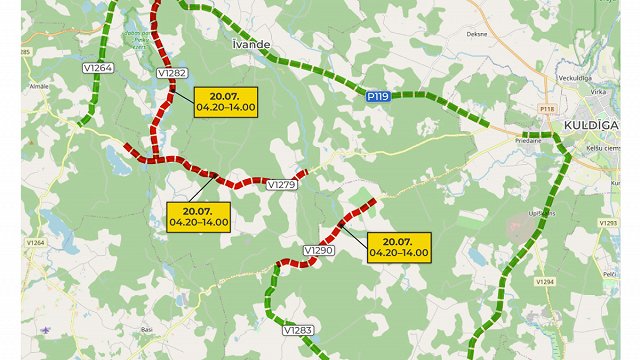The “black point” map is composed of several years of statistics. The previous map reflected data from 2017 to 2019. There were 48 black points on the map. In the new map, there are fewer black points – 37. This could indicate that our roads are getting safer.
It is true that there are still many road deaths. This year, 32 people died between January 1 and April 16. 25 people died in the same period last year.
The discussion held by “Latvian State Roads” on April 19 takes the view that last year there was the spread of Covid-19 and traffic was less intensive. But there is no official data on this.
“We have developed such legal nihilism on the part of the drivers that they are beginning to believe that it is alright to break the rules a little,” said Artūrs Smilga, executive director of the State Police Traffic Safety Administration.
“Many are driving without observing almost any [rules],” said Māris Zaļaiskalns director of the administration of the Latvian State Roads Transport Organization.
How to deal with it? There are also a number of options, but mainly an emphasis on harsher punishments, taking neighboring countries as an example.
“Both countries have penalties from the first kilometer [above permitted speed]. We are the only ones with this forgiveness limit of 10 kilometers per hour [above speed limit],” said Tālivaldis Vectirāns, director of the Transport Ministry's Department of Road Infrastructure.
“Just as soon as the average speed cameras are installed, it is clear that they [drivers] will pay once, pay twice, and not pay for the third time,” Zaļaiskalns said.
The most extensive discussions, however, concerned the way Latvia's statistics are shaped. Do we really know what caused the accident? The speed, tiredness, or anything else? There are versions of how accident data could be more broadly analyzed to understand the causes, not just to find the perpetrators. But the majority agreed that "black points" could become lighter when, finally, average-speed cameras begin operating. The first cameras could start working already this year. 'Average speed' cameras differ from single speed cameras by having cameras at two positions on a stretch of road. Cars are monitored at both points with the average speed between those points calculated as a result, so that vehicles cannot simply slow down as they pass a camera and then accelerate back over the speed limit.





























